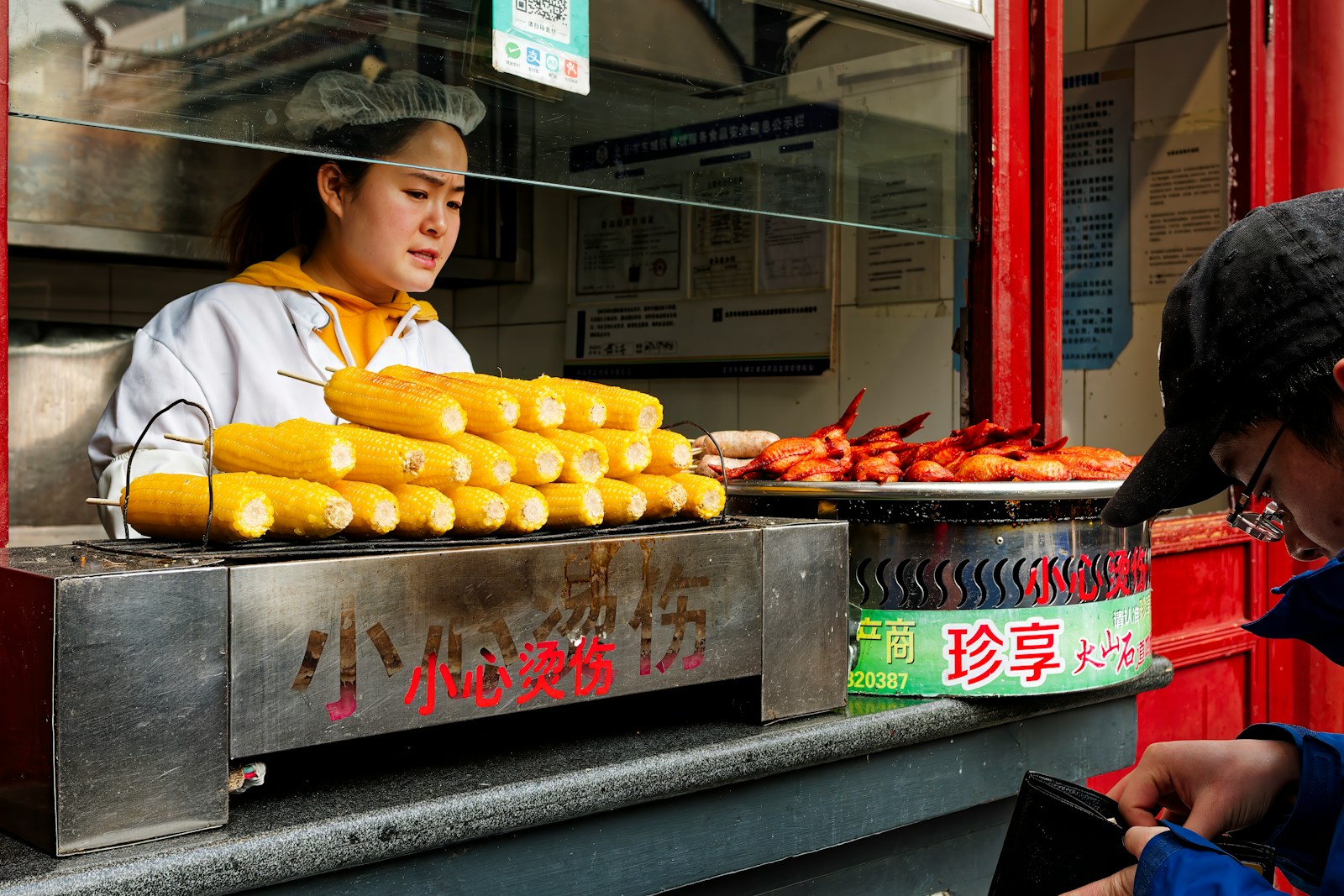Craving an authentic food experience while traveling? Discover how to find local cuisine and savor the tastes of your destination! From tech tools to asking locals, we’ve got you covered with the ultimate foodie guide for wanderlusting food lovers.
Why Local Cuisine Matters to Food Lovers
When it comes to traveling, food lovers know that nothing quite compares to indulging in local cuisine. You see, every dish tells a story, reflecting the culture, history, and traditions of a destination. Imagine munching on authentic tacos in Mexico or savoring fresh pasta in Italy—these are experiences that can’t be replicated elsewhere. Local cuisine connects travelers to the heart of a place, making each bite an adventure in itself!
Moreover, local dishes often use fresh, regional ingredients that pack unique flavors unexpected in your typical chain restaurant meal. So not only do you get a taste of authenticity, but you also support local
Why Local Cuisine Matters to Food Lovers
Travel is a feast for the senses, and food is its main course. For food lovers, indulging in local cuisine is not just about satisfying hunger—it’s about immersing yourself in the culture, history, and traditions of a destination. Every bite tells a story: from the humble origins of a street-side empanada to the carefully crafted layers of a Michelin-starred dish. Local cuisine is an edible narrative that connects you to the soul of a place.
Imagine eating handmade pasta in a rustic Italian trattoria, biting into a warm baguette in a bustling Parisian bakery, or savoring fragrant spices in a Moroccan souk. These authentic experiences go beyond the meal itself; they create lasting memories tied to the people, places, and flavors of your journey.
Local dishes often rely on fresh, regional ingredients that reflect the geography and climate of the area. This not only ensures unique flavors but also supports local farmers, fishermen, and small businesses. By choosing to eat locally, you’re contributing to the local economy and fostering sustainable tourism.
How to Sniff Out Local Eateries
Finding authentic local cuisine can feel like a treasure hunt, but with the right strategies, you’ll uncover hidden gems that offer more than just great food—they provide a true taste of the destination.
- Follow the Aromas: Pay attention to enticing smells wafting from a bustling kitchen. A tantalizing aroma often leads to an unassuming spot serving up incredible dishes.
- Observe the Crowd: Look for eateries filled with locals, not tourists. If the line is long and the chatter lively, chances are the food is worth the wait.
- Ask for Recommendations: Don’t hesitate to ask locals for their go-to spots. From taxi drivers to shopkeepers, they often know where to find the best authentic dishes. Their recommendations might lead you to a cozy café or a street vendor known only to residents.
- Wander Off the Beaten Path: Venture away from the main tourist areas and explore side streets. This is where you’ll often find hole-in-the-wall eateries with extraordinary flavors and a more intimate atmosphere.
Ask the Locals: The Ultimate Cheat Code
Ever heard the phrase ‘when in Rome’? Well, this is your chance to channel your inner Roman and ask the locals where they go to eat. Locals often have the best insight, and they love sharing their favorite spots. You might encounter a quaint café known only to residents, serving the best fritters in town or a street vendor with a secret recipe passed down through generations. Trust us; locals have the inside scoop on the most authentic experiences!
Using Technology to Find Hidden Gems
In today’s digital age, technology makes it easier than ever to locate authentic dining experiences:
- Review Platforms: Apps like Yelp, TripAdvisor, and Google Maps are great starting points for finding highly rated local spots. Look for keywords like “authentic” or “local favorite” in reviews.
- Instagram: Search hashtags related to your destination (e.g., #BangkokStreetFood or #ParisPastries) for visual inspiration and tips on where to eat.
- Food Blogs: Explore food and travel blogs written by locals or experienced travelers. They often highlight under-the-radar spots and provide insider knowledge.
- Local Food Tours: Booking a food tour is another fantastic way to discover hidden culinary treasures. These guided experiences take you straight to the best spots while sharing the history and culture behind each dish.
A Taste of Tradition: Cooking Classes & Food Tours
Taking a cooking class or joining a food tour can deepen your appreciation for local cuisine. Cooking classes allow you to learn traditional techniques from skilled chefs or home cooks. You’ll not only savor the flavors but also gain valuable skills to recreate those dishes at home. Imagine learning to make sushi in Tokyo or perfecting your mole sauce in Oaxaca.
Food tours, on the other hand, give you a curated tasting experience across multiple eateries. You can explore street food vendors, family-owned restaurants, and bustling markets—all in a single afternoon. For a glimpse into Mexico’s culinary treasures, check out this guide to Tlaquepaque’s best restaurants.
Markets, Festivals, and Other Unique Experiences
Markets and food festivals are treasure troves for food lovers:
- Markets: Local markets like La Boqueria in Barcelona or Tsukiji Market in Tokyo offer fresh produce, spices, and ready-to-eat meals. Sampling delicacies from market stalls gives you a real sense of the region’s culinary identity.
- Food Festivals: These events showcase a variety of dishes and regional specialties in one place. Think truffle festivals in Italy, seafood celebrations in coastal towns, or BBQ competitions in the southern United States.
- Street Food: Street vendors are often the heart of a destination’s culinary scene. From banh mi in Vietnam to empanadas in Argentina, these quick bites are affordable, flavorful, and deeply rooted in local traditions.
Dine Like a Local: Understanding Dining Etiquette
To fully enjoy local cuisine, familiarize yourself with dining customs:
- Table Manners: Each culture has unique traditions, such as sharing plates in Spain or waiting for the eldest to start eating in Korea.
- Ordering: Some countries expect you to order at the counter, while others have table service. Learn phrases in the local language to make ordering easier.
- Tipping: Research tipping customs ahead of time. For example, tipping is not common in Japan, while in the U.S., it’s expected.
Respecting these traditions enhances your dining experience and demonstrates cultural awareness.
Steering Clear of Tourist Traps: What to Avoid
Not all restaurants are created equal. To avoid tourist traps:
- Steer clear of places with menus in multiple languages and heavily advertised “authentic” cuisine.
- Avoid restaurants located near major attractions, as they often prioritize convenience over quality.
- Check reviews to see if the food is described as overpriced, bland, or generic.
Instead, prioritize establishments frequented by locals. Explore side streets and neighborhoods away from tourist hubs for more genuine flavors.
Case Study: Finding Hidden Food Spots in Bangkok
Imagine visiting Bangkok, known for its legendary street food. To find the best eats:
- Wander through Chinatown to sample fresh seafood cooked in woks over roaring flames.
- Visit a floating market like Damnoen Saduak for exotic fruits and spicy noodle soups.
- Ask locals for recommendations—they might direct you to a tucked-away stall serving heavenly mango sticky rice.
Similarly, explore hidden dining gems in Mexico for a vibrant mix of flavors and cultural authenticity.
Roaming Ramblers’ Guide to Food-Focused Adventures
At Roaming Ramblers, we believe food is one of the most powerful ways to connect with a destination. From guides to Tulum’s best restaurants to tips for discovering Mexico’s culinary festivals, we provide everything you need for a memorable food adventure.
Dive into our collection of resources to plan your next journey of flavors!






